When Jacqueline and Jean Schalit bought Le Grand Launay in 1973, there was everything to do. The 17th-century manor was neglected, the garden overgrown and the surrounding land used for intensive monoculture. Forty years later, the estate was designated a Jardin Remarquable by the French ministry of culture, the highest accolade awarded to gardens in France – among its ranks are Versailles, Villandry and Giverny.
The transformation was achieved thanks to the collaboration of two men: journalist Jean Schalit and garden designer Gaël Boëdec. Jean sadly passed away in 2020, but Gaël remembers their partnership fondly. “We were always exchanging ideas,” he says. Jean had already cleared the ground and added many shrubs and trees to his garden when the two met in 1997. But, as Gaël recalls, when he first saw the site it lacked unity. “The different parts weren’t linked together. There was no sense of destination or invitation to journey.”
What first attracted Jean to Gaël’s work was his unusual use of clipped evergreens – a far cry from the razor-sharp geometry of traditional French topiary. “In my garden I’d created a 40m-long Lonicera hedge with lots of undulations. It looked like a mass of people, except with no heads. Jean really liked the playful element and asked me to visit Le Grand Launay to see what I could do there.” So began their long partnership.
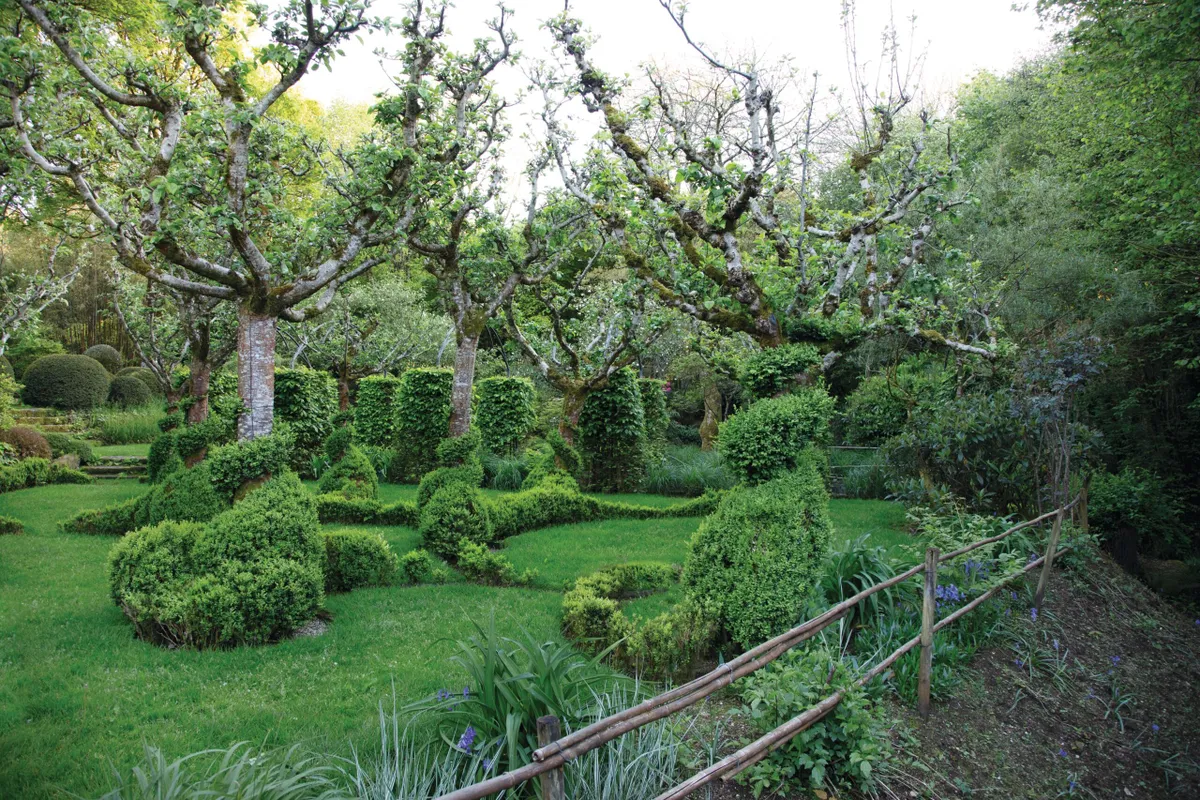
For seven years, they saw each other regularly. “We couldn’t transform the whole garden at once, so we did it little by little.” This slow evolution is in tune with the centuries-old site, and the end result is a garden that feels like it belongs. Gaël started by tackling the existing evergreens: thickets of laurel, camellia and rhododendron. He thinned them in places to allow the gaze to pass through the plantings rather than being cut short. Then he added new plants – beech, box, holly, hornbeam – chosen for their contrasting habits, leaf shapes and, of course, their propensity for clipping. Distinct garden rooms began to take shape and vistas appeared, framed by a rich mix of topiary and hard landscaping.
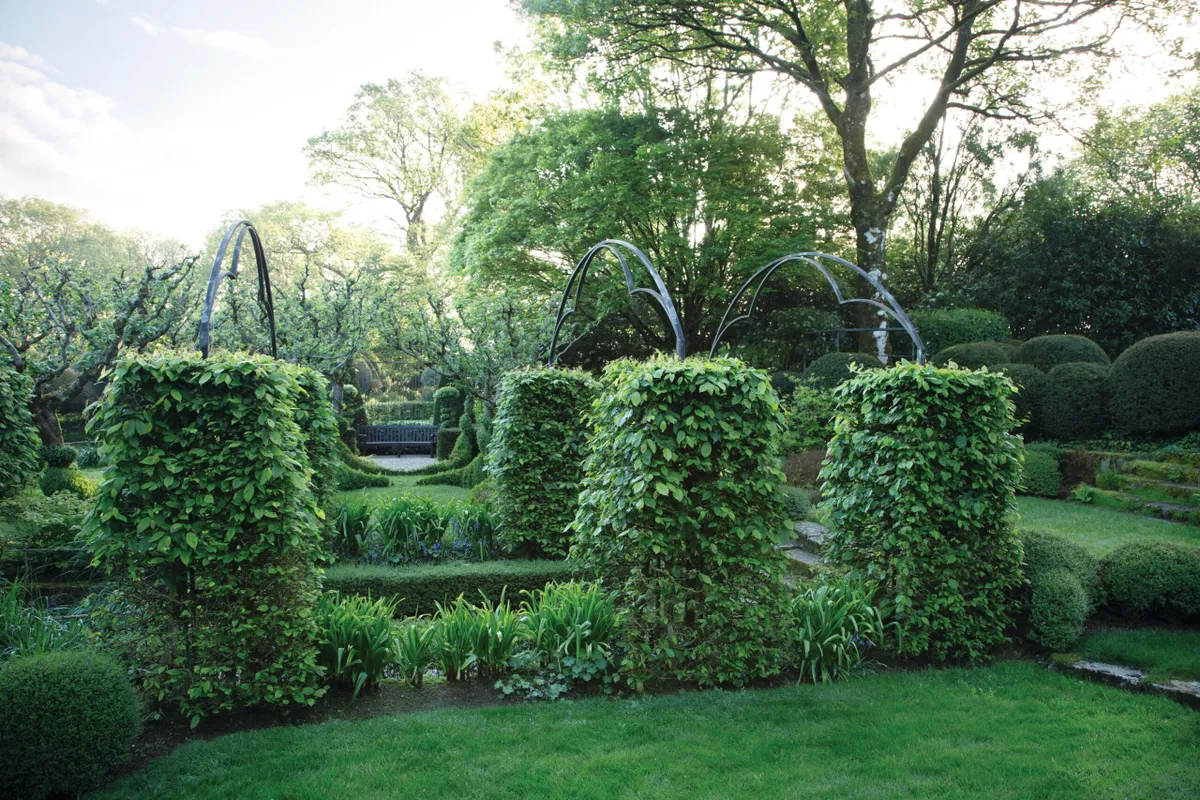
At the heart of the garden sits the unforgettable and much photographed Verger des Tentations, or Orchard of Temptations. Its design was inspired by the Garden of Eden, in which Eve is seduced by the serpent into eating the forbidden fruit. In accordance with the story, the small orchard features box ‘snakes’ that spiral their way up the trunks of Reinette apple trees. Their writhing shapes create a vibrant counterpoint to the traditional formality of the neatly spaced orchard trees. Gaël, who loves injecting a sense of movement into his gardens, originally planted the tiny box shrubs into small trenches with metal surrounds next to each apple tree. “The idea was that the snakes would look like they were coming out of the earth,” he says. Nowadays – in a pleasingly organic development – they appear to be winding themselves from one tree to the next, sometimes intertwined with one another. As the box is now getting older, clipping and maintenance requires patient work – something Gaël is still involved in at Le Grand Launay. He spends at least ten days a year looking after the topiary in the garden.
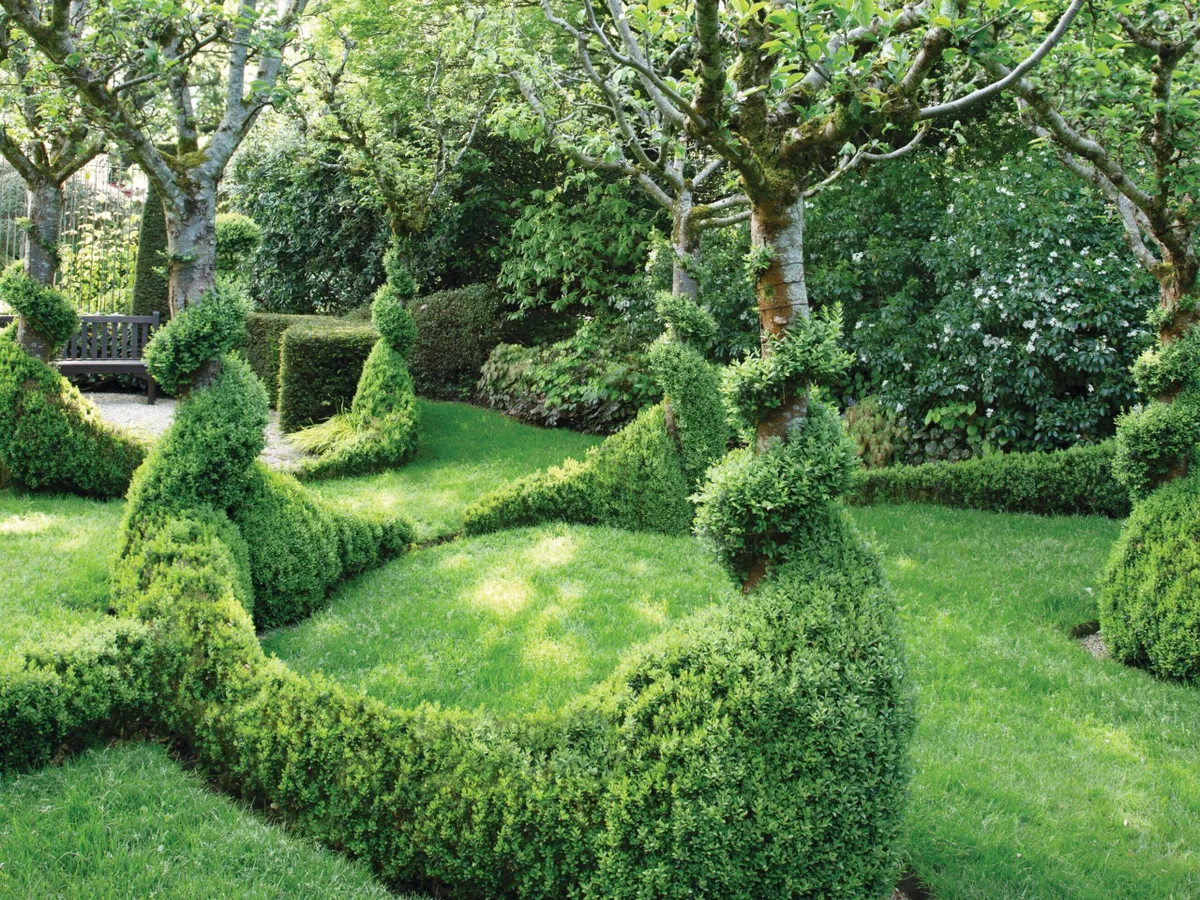
Throughout the garden, elegant metal structures – arches, gates, walls – add grace and focus to the design. Everywhere, Gaël has injected his own unique horticultural drama; what he describes as mise-en-scène, or scene-setting. And while each separate area works on its own, the whole site is linked by a network of paths, steps and low walls made of local granite and slate, echoing the materials of the manor. To create extra viewpoints, Gaël also added a perimeter walk, known as the Sentier de Déambulation (Path for Wandering). The Grande Cour (Large Courtyard) is another example of Le Grand Launay’s understated whimsy.
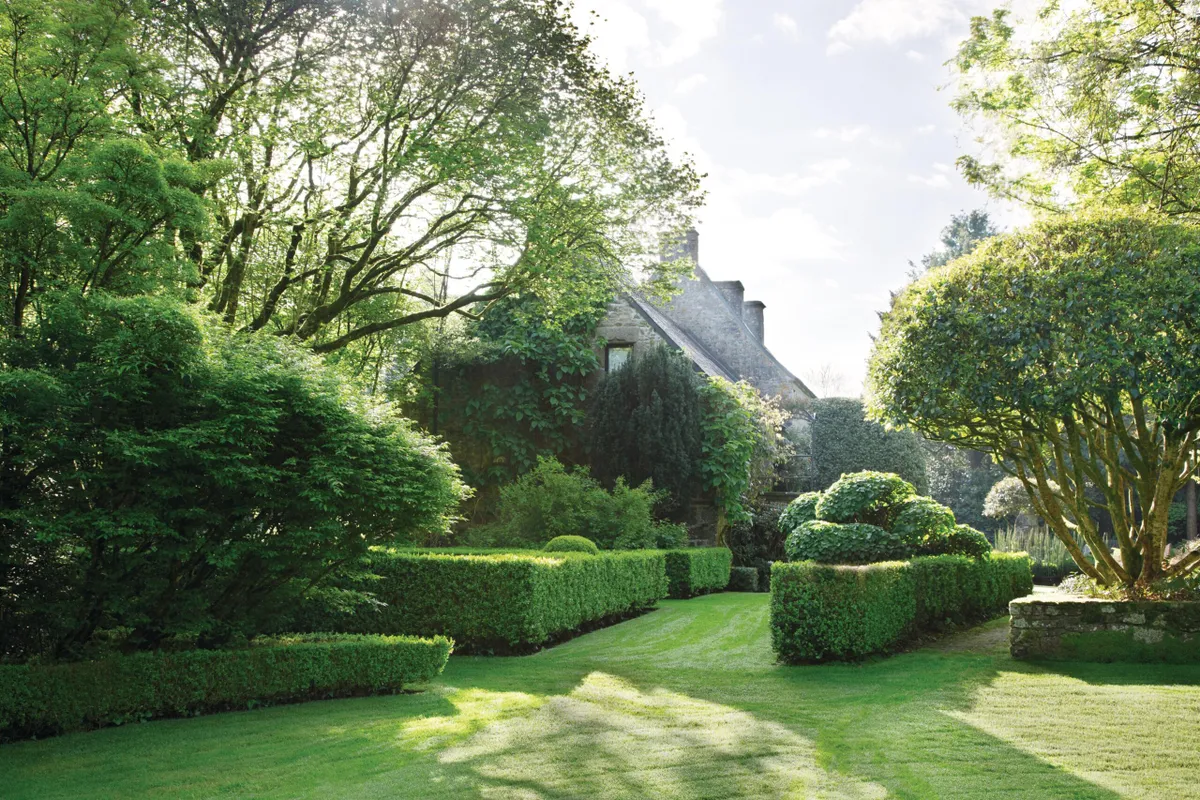
Set within a large lawn, a simple rectangular border is framed by parallel ripples of low box edging, containing semi-formal plantings of grasses, hostas, hardy geraniums, bluebells and shrub roses. Here also is a nod to the site’s history. A stone fountain, found during the clearing of the site, has been given pride of place at the centre of the border; its moss-covered stonework the perfect patina for a garden bathed in green. While green is the main event, water is the subplot, whether channelled or left to its own devices.
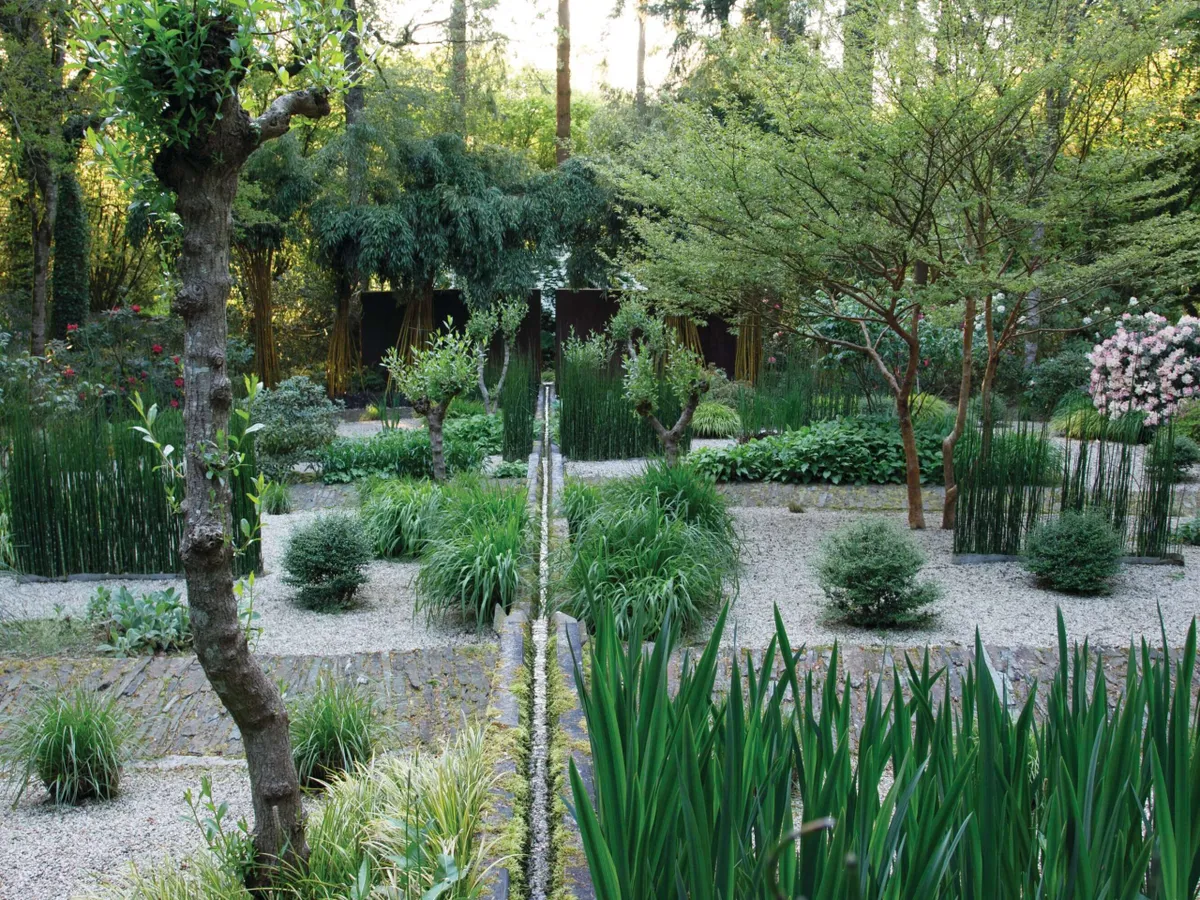
In the Jardin des Ondes (Garden of Waves), the final area created by the two men, a pencil-straight rill descends in wide terraces towards a metal wall. The channel continues its journey through a tiny opening in the wall and into a natural rivulet in the woods beyond – a charming reminder that formal garden and landscape are closely intertwined. “The garden is like a big woodland clearing,” explains Gaël. With its artful originality and strong sense of harmony, there is no doubt that Le Grand Launay is a remarkable garden. It is the result of slow, patient work by two nature lovers who consulted the genius of the place, but also, crucially, of the imagination.
IN BRIEF
Name Le Grand Launay.
What Private garden of rooms with topiary set pieces and evergreen structure connected with water.
Where Brittany, northern France.
Size Four acres.
Soil Poor, acid soil.
Climate Temperate with frequent rainfall.
Hardiness zone USDA 9.